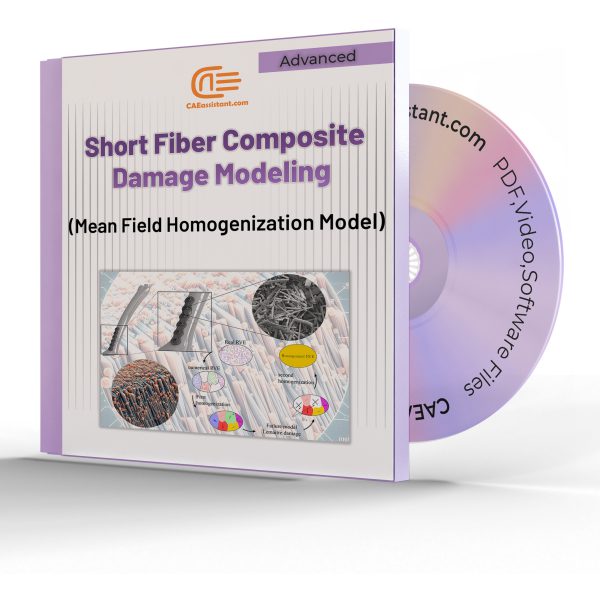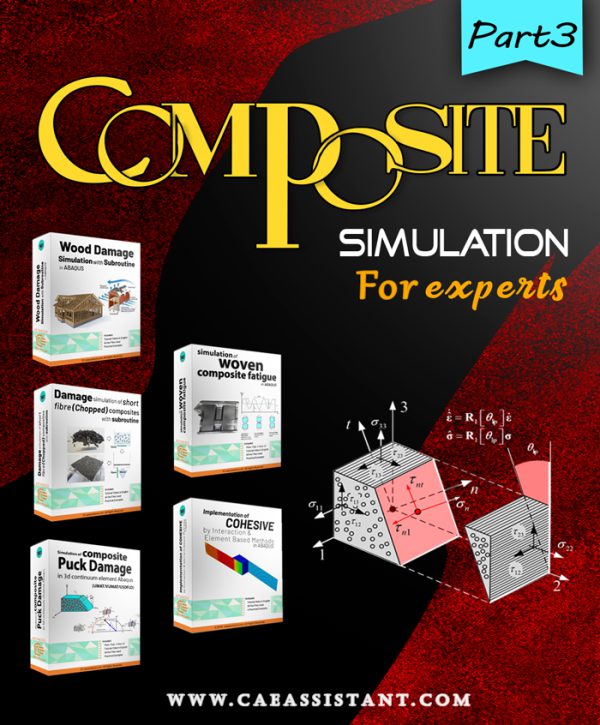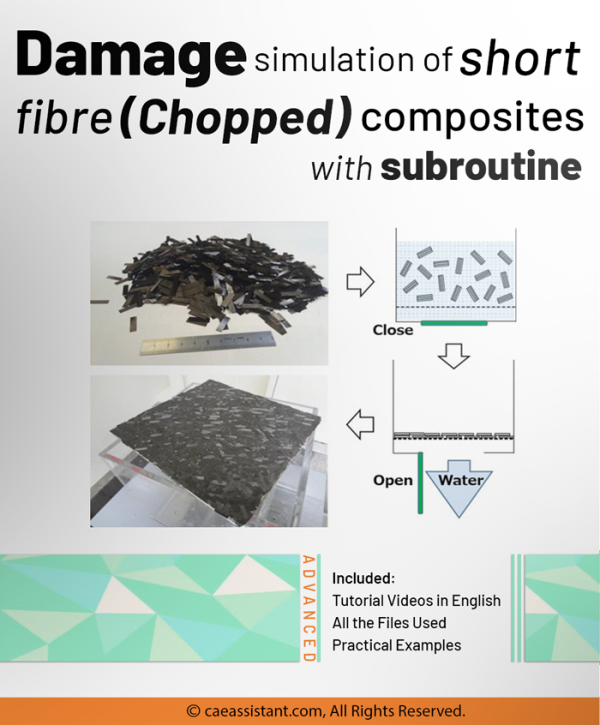short fiber composites
Short fiber composite damage (Mean Field Homogenization Model)
Short-fiber reinforced thermoplastics, popular due to their strength, lightness, and cost-effectiveness, are often manufactured using injection molding to create complex parts with dispersed short fibers. However, failure in these materials is complex, involving mechanisms like fiber cracking and plastic deformation. Current models for damage and failure are either macroscopic or simplified.
A new method tackles this challenge by evaluating stiffness using continuum damage mechanics with a multistep homogenization approach. This new method is called “Mean Field Homogenization”. This approach involves a two-stage process: first, the fibers are split into groups (grains). Then, mean-field homogenization is employed within Abaqus using a UMAT subroutine to average stiffness across these phases, followed by overall homogenization. This use of mean-field homogenization Abaqus simplifies the modeling of the composite's intricate geometry.
The method was validated through testing on a distal radius plate. Calibration was achieved through experiments, and the simulation was performed using Abaqus finite element software. It's important to note that the Abaqus short fiber damage mean field homogenization process was implemented within Abaqus through the INP code.
Composite simulation for experts-Part-3
Pay attention to the syllabus and availability file details. some of the packages are fully available and some of them are partially available. If this is partially available it takes at least two months to be completely available.
If you are a graduate or Ph.D. student, if you are a university professor or an expert engineer in the industry who deals with simulation software, you are definitely familiar with the limitations of this software in defining the material properties, loading or meshing, interaction properties, and etc. You have certainly tried to define the properties of materials based on advanced fracture theories in finite element software and are familiar with their limitations and problems. Now, here is your solution. Start writing subroutines in finite element software and overcome the limitations. With the tutorials in the Golden Package, you will learn how to write 8 subroutines in Abaqus software professionally.Damage simulation of short fibre composites with subroutine
Short fiber composites consist of chopped fibers and a matrix, forming a discontinuous fiber-reinforced material, with fibers typically positioned either aligned or randomly within the matrix based on the intended application. In this training package, you will learn how to model the short fiber composite (SFC) damage in Abaqus based on this article: “Damage Modeling in Random Short Glass Fiber Reinforced Composites Including Permanent Strain and Unilateral Effect”. In the lesson one, you will learn the fundamentals such as the SFCs advantages, applications, and etc. Moving on to Lesson 2, the focus shifts to modeling Short Fiber Composites in Abaqus. The lesson introduces the critical decision between Macro and Micro modeling, which this package do a macro modeling. Lesson 3 advances the learning journey by exploring damage modeling in Short Fiber Composites, particularly through Dano's model. This macroscopic approach incorporates irreversible processes and internal variables, addressing anisotropic damage, unilateral effects, and residual effects. Lesson 4 bridges theory to practical application, guiding users on how to implement Dano's model in Abaqus through the VUSDFLD subroutine. The tutorial navigates through the subroutine's flowchart, explaining each line sequentially. Complementing the lessons are two workshops. Workshop 1 features a 2D composite plate with a hole using plane stress elements, offering a detailed breakdown of material properties, boundary conditions, and simulation procedures. Workshop 2, mirroring the first, employs shell elements, showcasing variations in element types while maintaining consistency with the utilization of the VUSDFLD subroutine.





